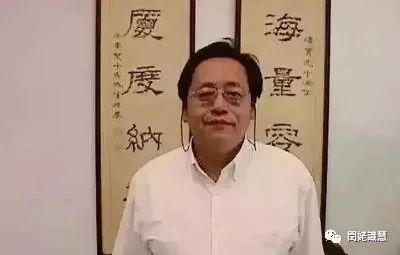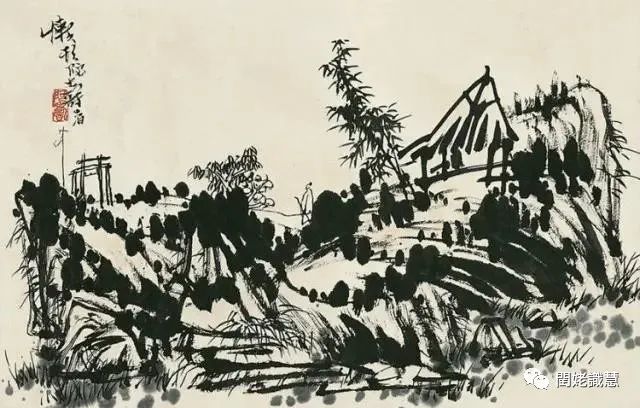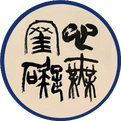
Section Nine Key Points of Pulse Diagnosis: Slippery and Floating
Page 84, the size of the pulse, slippery, hard, floating, and deep can indicate different conditions. The representations of the five organs can be inferred. The sounds of the five organs can be perceived. The subtle diagnosis of the five colors can be observed. The pulse color can match, and the pulse color can correspond, which is essential for a comprehensive diagnosis.
This sentence encapsulates a key point of diagnosis. It is the essence of our diagnostic principles. Let’s redraw this. The upper jiao includes the heart, lungs, liver, spleen, and kidneys; this is the upper part, this is yang, and this is yin.
We refer to slippery pulse (hua mai), hard pulse (ke mai), floating pulse (fu mai), and deep pulse (chen mai). Among these, slippery and floating belong to yang pulses. If it is a hard pulse or a deep pulse, these belong to our yin pulses.
Thus, using these four terms, slippery and floating represent yang, while hard and deep represent yin, allowing us to distinguish between yin and yang.
The entire system of Traditional Chinese Medicine revolves around yin and yang. After all this discussion, it still emphasizes yin and yang. The upper part, the thoracic cavity, contains the lungs and heart, which belong to the upper, yang area, while the lower part is yin.
Therefore, when we perform pulse diagnosis, the upper part relates to yang, and the lower part relates to yin. In the center, we have the stomach located here. Isn’t there a stomach in this area? No one’s stomach goes that low, right? Only the stomach is in this area. A slightly lower stomach prolapse is still not that low; the stomach does not differ that much.
Thus, the center is the spleen and earth. I mention this center, yin and yang center; this center is where yin and yang converge, where yin qi and yang qi intersect, and yin and yang combine to form the center. Therefore, the center is where the defensive qi resides.
So we consider the center as earth, and all the normal pulses of the organs, when you palpate the pulse, the shape of the pulse, for example, if you feel the liver pulse is string-like (xian), its shape is string-like, but its pulse qi, its strength, must be gentle, and it must have this aspect of stomach qi.

Source: Internet
The articles published by this account are mostly excerpts from publicly available content on the internet, intended for reference and learning purposes only, and should not be used as a basis for diagnosis or treatment. If needed, please consult a physician for guidance. If there are copyright issues, please contact us.
Pulse Patterns of the Lung – Ni Haixia’s “Huangdi Neijing” Chapter 10 on the Generation of the Five Organs (10.8)
Epilepsy and Headaches – Ni Haixia’s “Huangdi Neijing” Chapter 10 on the Generation of the Five Organs (10.7)
Five Absolute Qi Pulses – Ni Haixia’s “Huangdi Neijing” Chapter 10 on the Generation of the Five Organs (10.6)
Liver Jueyin (Sleep and Vision) – Ni Haixia’s “Huangdi Neijing” Chapter 10 on the Generation of the Five Organs (10.5)
Eight Winds and Eight Evils – Ni Haixia’s “Huangdi Neijing” Chapter 10 on the Generation of the Five Organs (10.4)
Observation Diagnosis: Eye Examination of the Health Status of the Five Organs – Ni Haixia’s “Huangdi Neijing” Chapter 10 on the Generation of the Five Organs (10.3)
Selection of Medicines and Foods – Ni Haixia’s “Huangdi Neijing” Chapter 10 on the Generation of the Five Organs (10.2)
Five Tastes and Their Harm – Ni Haixia’s “Huangdi Neijing” Chapter 10 on the Generation of the Five Organs (10.1)
Five Tastes Corresponding to the Five Organs – Ni Haixia’s “Huangdi Neijing” Chapter 9, Section Six on the Theory of Zangxiang (9.7)
Functions of the Kidneys: Hair Color and Bone Marrow – Ni Haixia’s “Huangdi Neijing” Chapter 9, Section Six on the Theory of Zangxiang (9.6)
Zangxiang: Heart, Lungs, Liver, Kidneys, Spleen – Ni Haixia’s “Huangdi Neijing” Chapter 9, Section Six on the Theory of Zangxiang (9.5)
Five Colors and Five Tastes of Medicinal Materials – Ni Haixia’s “Huangdi Neijing” Chapter 9, Section Six on the Theory of Zangxiang (9.4)
Astronomy and the Number Five – Ni Haixia’s “Huangdi Neijing” Chapter 9, Section Six on the Theory of Zangxiang (9.3)
Seasonal Qi and the Five Elements – Ni Haixia’s “Huangdi Neijing” Chapter 9, Section Six on the Theory of Zangxiang (9.2)
Heavenly Stems and Earthly Branches Qi – Ni Haixia’s “Huangdi Neijing” Chapter 9, Section Six on the Theory of Zangxiang (9.1)
Ruler’s Organs: Heart and Sanjiao – Ni Haixia’s “Huangdi Neijing” Chapter 8, Linglan Secret Classic (8.2)
Twelve Zangxiang – Ni Haixia’s “Huangdi Neijing” Chapter 8, Linglan Secret Classic (8.1)
Normal Zangfu: Yang and Yin – Ni Haixia’s “Huangdi Neijing” Chapter 7, Yin Yang Distinction (7.8)
Fullness and Solidness of the Fu Organs – Ni Haixia’s “Huangdi Neijing” Chapter 7, Yin Yang Distinction (7.7)
Normal Yin – Ni Haixia’s “Huangdi Neijing” Chapter 7, Yin Yang Distinction (7.6)
Normal Color of the Hands: Symptoms of Excess Yin and Deficient Yang – Ni Haixia’s “Huangdi Neijing” Chapter 7, Yin Yang Distinction (7.5)
Yin and Yang Interchange: Five Types of Pulse Patterns – Ni Haixia’s “Huangdi Neijing” Chapter 7, Yin Yang Distinction (7.4)
Treatment of Gallstones: Drum Yang Hook Pulse – Ni Haixia’s “Huangdi Neijing” Chapter 7, Yin Yang Distinction (7.3)
Three Yang Diseases – Ni Haixia’s “Huangdi Neijing” Chapter 7, Yin Yang Distinction (7.2)
Normal Pulses for Men and Women – Ni Haixia’s “Huangdi Neijing” Chapter 7, Yin Yang Distinction (7.1)
Separation and Combination of Three Yang and Three Yin – Ni Haixia’s “Huangdi Neijing” Chapter 6, Theory of Yin Yang Separation and Combination (6.1)
Exterior Diseases: Sweating Method – Ni Haixia’s “Huangdi Neijing” Chapter 4, Golden Cabinet True Words (5.6)
Treatment of Liver Cancer – Ni Haixia’s “Huangdi Neijing” Chapter 4, Golden Cabinet True Words (5.5)
Heavenly Principles and Earthly Ways – Ni Haixia’s “Huangdi Neijing” Chapter 4, Golden Cabinet True Words (5.4)
Yin Yang Harmony – Ni Haixia’s “Huangdi Neijing” Chapter 4, Golden Cabinet True Words (5.3)
Treatment Principles: Yin Yang Balance – Ni Haixia’s “Huangdi Neijing” Chapter 4, Golden Cabinet True Words (5.2)
Five Organs Transforming into Five Qi: Emotions – Ni Haixia’s “Huangdi Neijing” Chapter 4, Golden Cabinet True Words (5.1)
Yin Yang Correspondence – Ni Haixia’s “Huangdi Neijing” Chapter 4, Golden Cabinet True Words (5.0)
Five Organs Corresponding to Shape, Color, Qi, and Taste – Ni Haixia’s “Huangdi Neijing” Chapter 4, Golden Cabinet True Words (4.4)
Yin within Yin, Yang within Yang – Ni Haixia’s “Huangdi Neijing” Chapter 4, Golden Cabinet True Words (4.3)
Human Body Yin and Yang – Ni Haixia’s “Huangdi Neijing” Chapter 4, Golden Cabinet True Words (4.2)
Five Winds and Eight Winds: Diseases Easily Occurring in Four Seasons – Ni Haixia’s “Huangdi Neijing” Chapter 4, Golden Cabinet True Words (4.1)
Shang Han Lun: Five Tastes and Five Organs Color – Ni Haixia’s “Huangdi Neijing” Chapter 3, Theory of Vital Energy (3.7)
Shang Han Lun – Ni Haixia’s “Huangdi Neijing” Chapter 3, Theory of Vital Energy (3.6)
Four Images: Relationship between Yin Yang and Time – Ni Haixia’s “Huangdi Neijing” Chapter 3, Theory of Vital Energy (3.5)
Spirit (Heart), Soul (Liver), and Corporeal Soul (Lung) – Ni Haixia’s “Huangdi Neijing” Chapter 3, Theory of Vital Energy (3.4)
Opening and Closing of Yang Qi – Ni Haixia’s “Huangdi Neijing” Chapter 3, Theory of Vital Energy (3.3)
Symptoms of Yang Qi Deficiency: Damp Heat and Warts – Ni Haixia’s “Huangdi Neijing” Chapter 3, Theory of Vital Energy (3.2)
Theory of Yang Qi – Ni Haixia’s “Huangdi Neijing” Chapter 3, Theory of Vital Energy (3.1)
Yin Yang Pulse Diagnosis – Ni Haixia’s “Huangdi Neijing” Chapter 2, Theory of Four Qi Regulation (2.4)
Yin Yang Harmony Theory – Ni Haixia’s “Huangdi Neijing” Chapter 2, Theory of Four Qi Regulation (2.3)
Four Qi Regulation: Liver, Heart, Lung, Kidney – Ni Haixia’s “Huangdi Neijing” Chapter 2, Theory of Four Qi Regulation (2.2)
Seasonal Activities – Ni Haixia’s “Huangdi Neijing” Chapter 2, Theory of Four Qi Regulation (2.1)
Sages and Wise Men – Ni Haixia’s “Huangdi Neijing” Chapter 1, Theory of Ancient Innocence (1.10)
Key Indicators of Male Growth Period – Ni Haixia’s “Huangdi Neijing” Chapter 1, Theory of Ancient Innocence (1.9)
Uterine Fibroids and Menstruation – Ni Haixia’s “Huangdi Neijing” Chapter 1, Theory of Ancient Innocence (1.8)
The Importance of Water – Ni Haixia’s “Huangdi Neijing” Chapter 1, Theory of Ancient Innocence (1.7)
Balance of the Five Organs – Ni Haixia’s “Huangdi Neijing” Chapter 1, Theory of Ancient Innocence (1.6)
Women’s Menstrual Cycle and Spleen – Ni Haixia’s “Huangdi Neijing” Chapter 1, Theory of Ancient Innocence (1.5)
Key Indicators of Female Growth Period – Ni Haixia’s “Huangdi Neijing” Chapter 1, Theory of Ancient Innocence (1.4)
Difficulty in the Tenth Difficulty: Five Evils – Ni Haixia’s “Huangdi Neijing” Chapter 1, Theory of Ancient Innocence (1.3)
Analysis of the Dao – Ni Haixia’s “Huangdi Neijing” Chapter 1, Theory of Ancient Innocence (1.2)
Preface – Ni Haixia’s “Huangdi Neijing” (1.1)
Da Jian Zhong Tang Lecture by Hu Xishu: Treatment of Abdominal Fullness, Cold Hernia, and Food Retention – Ni Haixia’s “Huangdi Neijing” Chapter 4, Golden Cabinet True Words (5.6)

